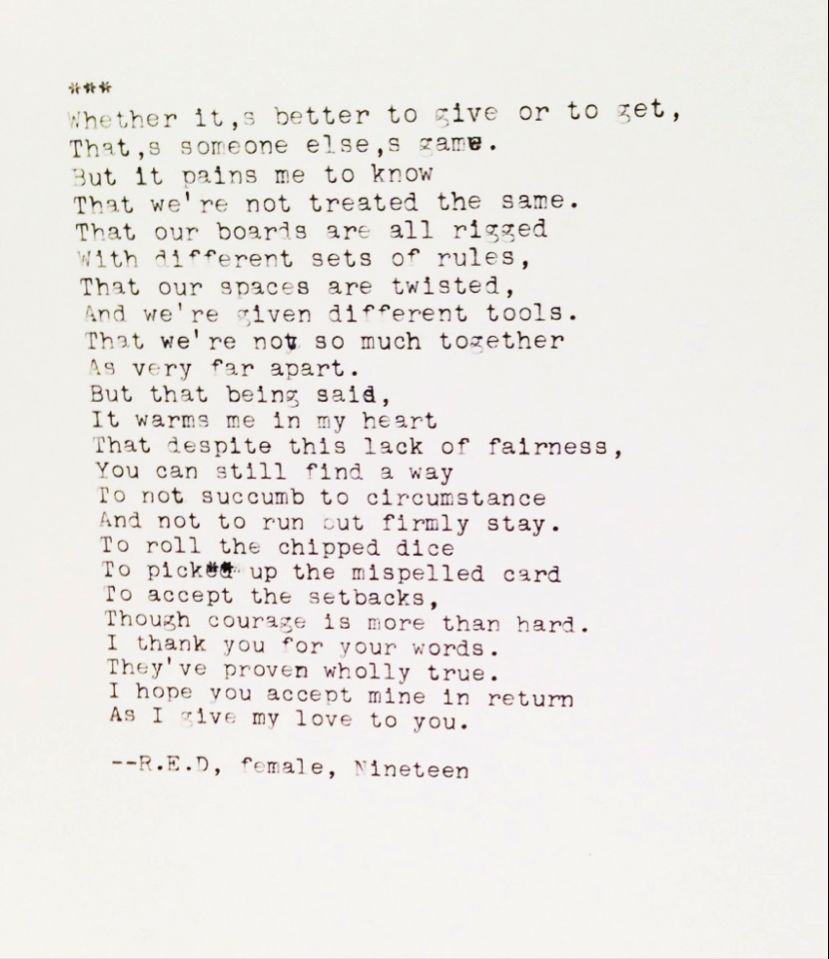
How Can a Museum Foster a Spirit of Giving?
November and December have long been associated with a season of giving. At the Hammer Museum, you can immerse yourself in the giving spirit by participating in a project that positively impacts an overlooked segment of our population—incarcerated youth.
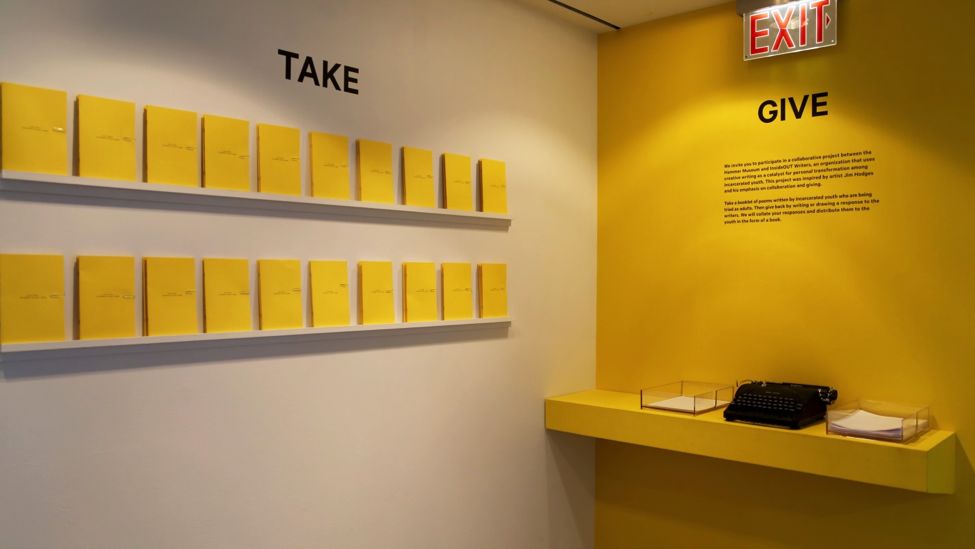
The art and philosophy of Jim Hodges, whose work is on view in the current exhibition Jim Hodges: Give More Than You Take, inspired Hammer staff to consider how we might foster a spirit of giving in our museum. We spoke with Hodges about our interest in partnering with an organization that could benefit from some type of action that would take place in our Open Corner—an area near the Hammer Store that we’ve designated for visitor participatory projects. Hodges was particularly interested in issues around the prison system in California, so we approached nonprofit organization InsideOUT Writers (IOW) to see if we may be of help to the youth they serve.
IOW uses creative writing with currently and formerly incarcerated youth as a catalyst for personal transformation. The works of these young writers typically remain within the bars of juvenile halls, so why not provide a space in the museum for these voices to be heard and for our visitors to respond?
Corresponding with the title of the Hodges exhibition, IOW instructors invited youth who are being tried or sentenced as adults to respond to the writing prompt, “What have you given or taken?” The results were collated into a booklet of 12 poems and prose that reflect a powerful range of emotions—disappointment, frustration, addiction, regret, loss, and occasionally hope. In the booklets, the identities of these young writers have been protected, but their disclosed ages remind us that the harsh life experiences articulated in the writings were endured by teenagers.
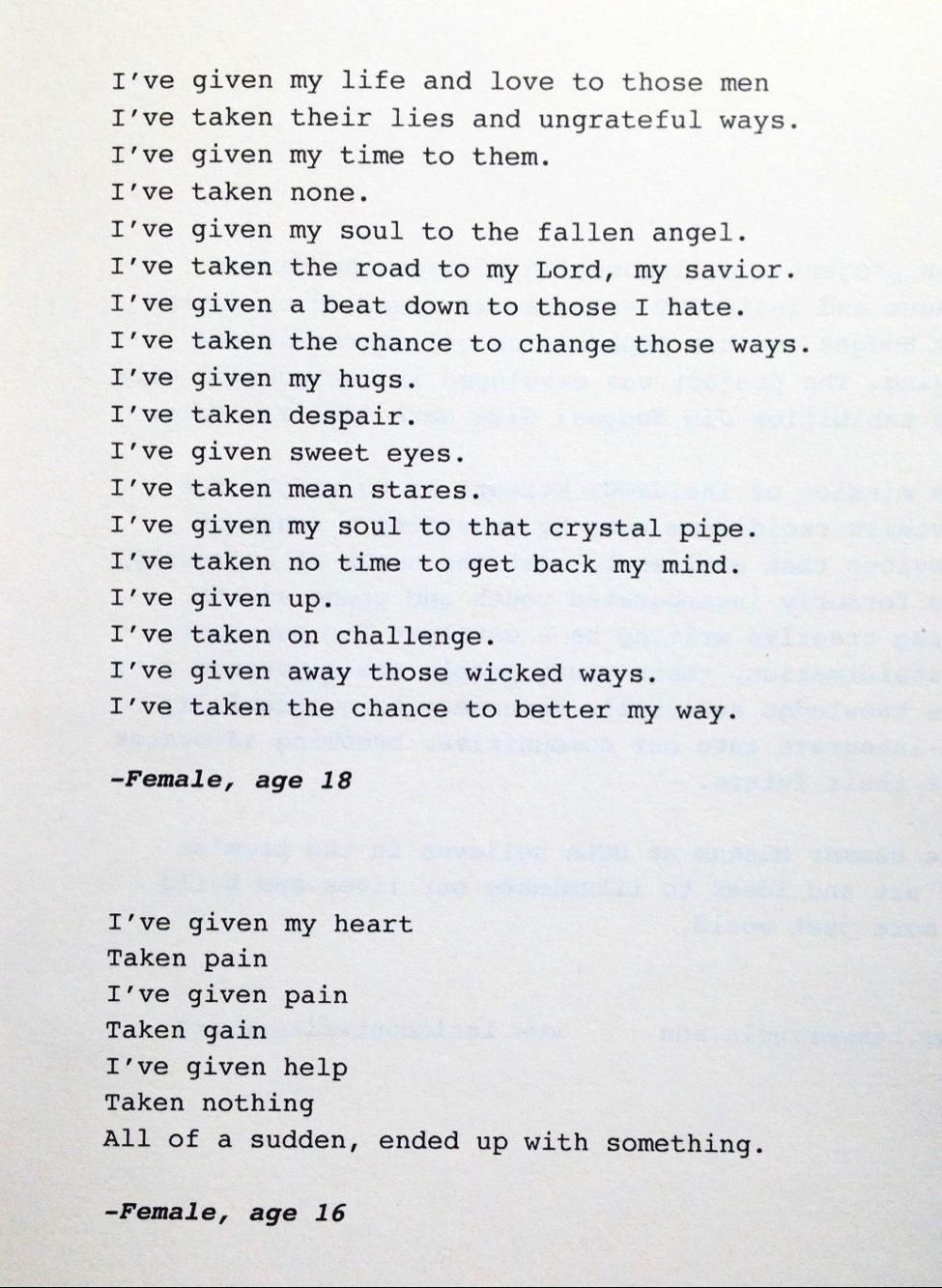
Visitors and staff can take a booklet of poems and prose written by incarcerated youth and give back by drawing or writing a response on a typewriter. Responses will be collated and distributed to the youth in juvenile halls in order to give positive words of encouragement to a population unable to communicate with the outside world.
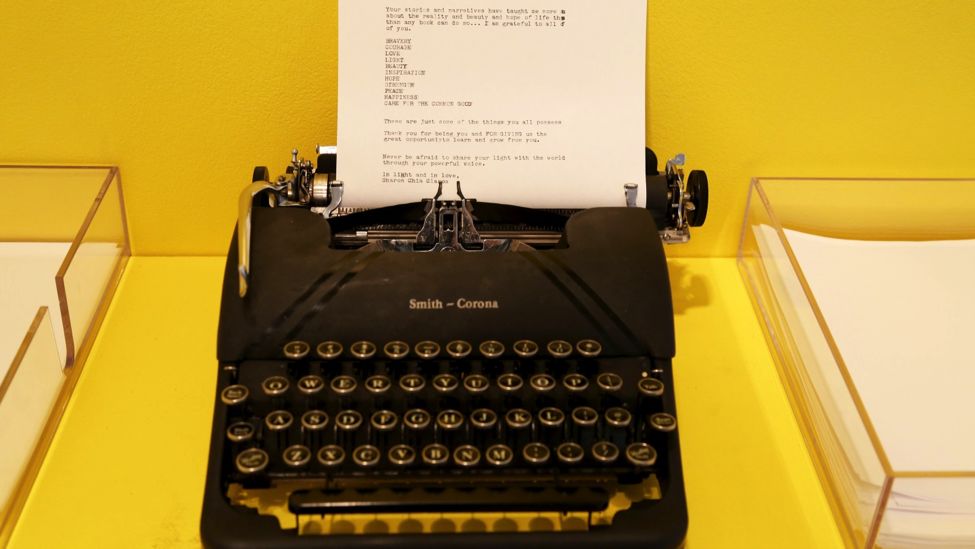
Since the project launched on October 2, we have received over 400 responses, ranging from heartfelt one-page letters and original poems to encouraging aphorisms. At this rate, I suspect we will have over 1,000 responses by the time the Jim Hodges exhibition closes on January 18, 2015.
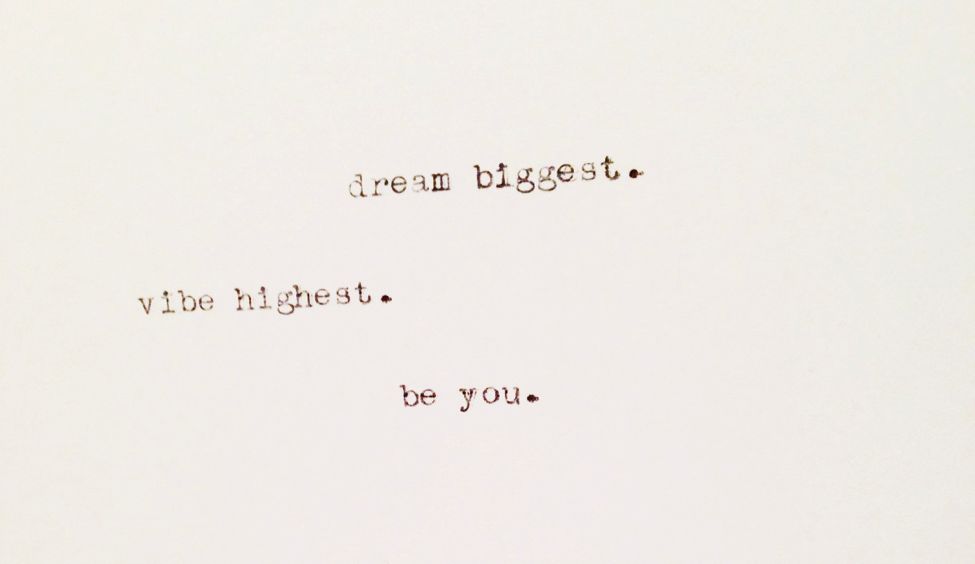
One of my favorite responses emphasized the importance of peace, love, and forgiveness and was co-written by a child and an adult. What struck me was not simply the intent of their message, but the fact that they wrote the response together, an indication of shared values, togetherness, and a joint desire to communicate in a positive way to strangers during a voluntary visit to a contemporary art museum.
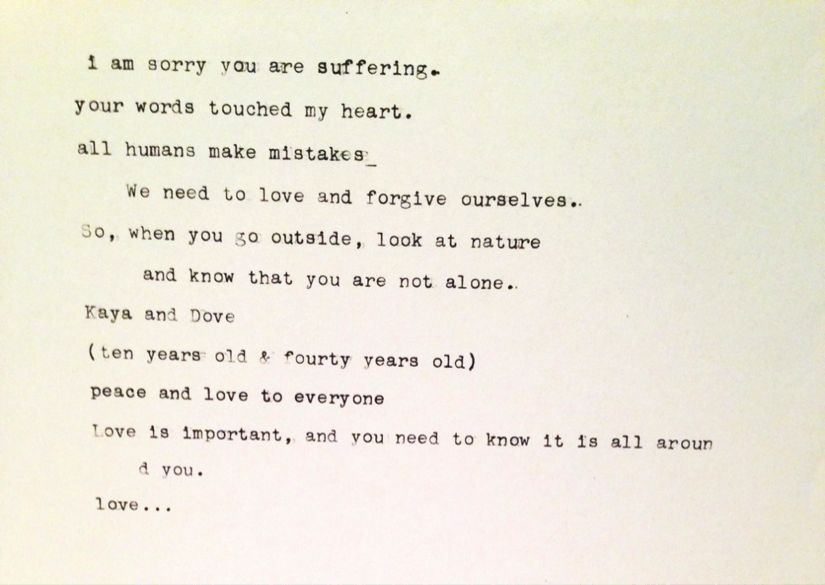
I agree with Kaya and Dove that all humans make mistakes. However, not all humans are operating from the same shared values and support mechanisms. In what ways have the opportunities afforded to 10-year-old Kaya allowed her to make different kinds of mistakes than the 17-year-old IOW writer who wrote the following: “My big brother gave his life to his gang and someone from another gang took his life. I feel like this is what give and take means to me”?
Obviously writing responses to poems and prose will not change the social, educational, and economic inequities that fuel the types of decisions which can lead to stints in juvenile hall. But hopefully this Open Corner project will give a dose of encouragement and hope to youth who could stand to take as many positive messages as they can.

